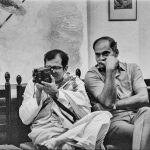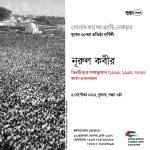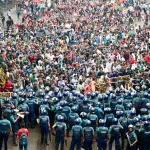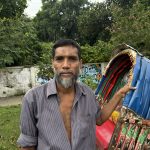

-
-
-
Kalpana's Warriors
Remarkable: Noam Chomsky Absolutely stunning: Jess Worth. New Internationalist Magazine…
-
Majority World exhibition in Rome: Justice in Focus
IDLO Photo Exhibition in Rome Farnesina Porte Aperte 2015 22…
-
Global Photography Exhibition Opens at UN Rights Council Meeting
Photographs Humanize Rule of Law and Access to Justice Photographers:…
-
Do Muslim Women Really Need Saving?
Abu-Lughod, Lila. Do Muslim Women Really Need Saving? Anthropological Reflections…
-
-
-
Pathshala student again wins Ian Parry Award
Pathshala student Farzana Hossen declared winner of the prestigious Ian…
-
What Happened When My Son Wore A Pink Headband To Walmart
Katie Vyktoriah?Huffington Post Stay-at-home mom and blogger, amotherthing.com This is…
-
-
-
Bangladeshi blog Infolady wins Global Media Forum Award
This year’s Global Media Forum Award went to the project…
-
My So-Called 'Post-Feminist' Life in Arts and Letters
Deborah Copaken Kogan?is a novelist whose most recent work, The…
-
Al Jazeera: Turmoil over Bangladesh tribunal
On country’s Independence Day, Al Jazeera looks at issues surrounding…
-
Losing my religion for equality?by Jimmy Carter
By Jimmy Carter. Women’s Press Women and girls have been…
Latest Posts
Categories
- 1971
- Afghanistan
- Arts
- Bangladesh
- Capitalism
- Caretaker government
- Censorship
- China
- Chittagong Hill Tracts
- Chobi Mela
- Chobi Mela VII
- Coal
- Colonialism
- Consortium government
- Corruption
- COVID 19
- Crossfire
- culture
- Current News Photos
- Democracy
- development
- Disappearances
- disasters
- Drik and its initiatives
- Drik DNA
- Drik's Network Partners
- Drugs
- economy
- Education
- Elections
- Energy
- environment
- exploitation
- features
- Film
- Garments
- Gas
- Gender
- Genocide
- Global Issues
- Governance
- guimet
- Health
- History
- Human rights
- Humour
- Immigration
- Imperialism
- India
- Interesting sites
- Interviews
- Interviews and Features
- Islam
- Kalpana Chakma
- Killings
- Law
- lectures
- literature
- Major Features on Bangladesh
- Majority World
- media
- Media issues
- Migration
- Military
- mining
- Mir Jafar
- Monarchy
- Music
- My Photo Essays
- Nepal
- New Age
- New Media
- News Archives
- News Photo Archives
- Nuclear
- Occupation
- Oil
- Pakistan
- Partition
- Pathshala
- People
- Personal
- Photography
- Photojournalism
- Photojournalism issues
- photojournalist
- politics
- Poverty
- RAB
- Rahnuma Ahmed
- Religion
- Resistance
- Reviews
- Science
- security
- Shahidul Alam
- Sheikh Hasina
- short stories
- Sites of Drik and Pathshala photographers
- South Asia
- Southern Exposure
- Sports
- Sri Lanka
- surveillance
- Taliban
- Technology
- Terrorism
- Transport
- UK
- Uncategorized
- USA
- Violence
- War
- war on terror
- Water
- World
Tags
1971 Art Arts Bangladesh book censorship Chobi Mela Chobi Mela VII culture Death democracy Dhaka Drik education Elections exhibition Festival garments Gaza Genocide Governance history Human rights India Israel Journalism Law literature Majority World media Military Pakistan Palestine Pathshala Photography Photojournalism politics Rahnuma Ahmed resistance Shahidul Alam USA Violence Visual Arts War War Crimes



